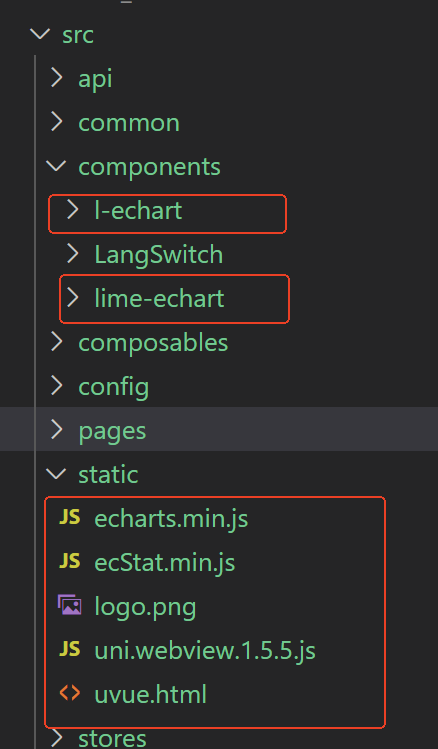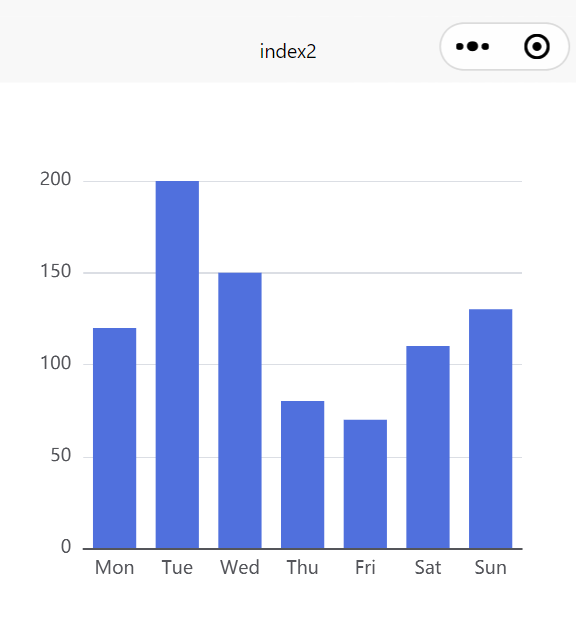1、获取 lime-echart插件
https://gitee.com/liangei/lime-echart
将其中组件和静态资源分别放入当前项目对应的文件夹中:

2、安装 echarts
npm install echarts --save
具体查看官网,进行按需或者全局引入
如果只需要支持微信小程序,那可以不用单独安装echarts。
3、相关代码
<template>
<view style="width:750rpx; height:750rpx">
<l-echart ref="chartRef"></l-echart>
</view>
</template>
<script setup>
import { ref, onMounted } from 'vue'
// #ifdef H5
import * as echarts from 'echarts'
// #endif
// #ifdef MP-WEIXIN
// 一定要确保使用相对路径引入,不支持别名方式,比如@,使用了可能会出现获取不到问题
const echarts = require('../../static/echarts.min')
// #endif
console.log(echarts,'echarts!!!!!!')
const chartRef = ref(null)
const option = {
xAxis: {
type: 'category',
data: ['Mon', 'Tue', 'Wed', 'Thu', 'Fri', 'Sat', 'Sun'],
},
yAxis: {
type: 'value',
},
series: [
{
data: [120, 200, 150, 80, 70, 110, 130],
type: 'bar',
},
],
}
onMounted(() => {
// 组件能被调用必须是组件的节点已经被渲染到页面上
setTimeout(async () => {
if (!chartRef.value) return
const myChart = await chartRef.value.init(echarts)
myChart.setOption(option)
}, 300)
})
</script>
<style lang="scss" scoped>
</style>
4、在线定制
https://echarts.apache.org/zh/builder.html
由于引入的插件使用的完整的echarts.js文件相对较大,而在小程序中当然是体积越小越好,就自己可以定制下载。选择自己需要的图表组件等,下载后,替换static/echarts.min.js文件。
5、效果截图
